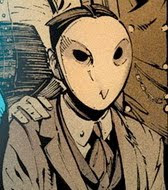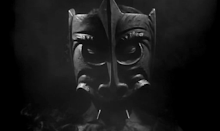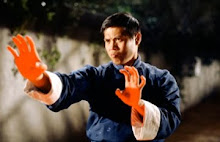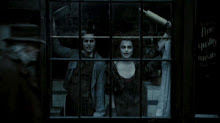
Out of the countless amount of Samurai anime that has been produced Rurouni Kenshin remains the most popular (Its title recently challenged by Samurai Champloo).
The first season of Kenshin was an unremarkable but fun action anime. The second season upped the stakes considerably, producing a run remarkable not for doing things differently, as much as doing them so awfully well. (It also produced a third series which was neither remarkable nor fun, but we won’t talk about that.)
The logline of the show wouldn’t be out of place in a Clint Eastwood Western (and indeed, hasn’t been) Kenshin once a ruthless killer has settled into an idealized domesticity as he does what he can to help with the modernization of Japan through its fragile Meji government. Interrupted on a weekly basis by ruthless young killers trying to make their name killing the last of the old guard, and old rivals from the days of the revolution intent on settling their final score. After some hesitancy Kenshin breaks out his reverse blade sword, reveals some heretofore unknown technique and then imparts a valuable lesson about honor, or mercy, or good dental hygiene. Its an effective formula and one can hardly blame the makers of Kenshin for sticking with it for nearly thirty episodes.
The second season hits the ground running with a mini arc so good I had to consider reviewing it independently. It works more like a film, then just a series of TV shows, and indeed much better then the show’s disappointing film itself.
An old rival from the days of the revolution returns to stir up trouble. Which lets face it, is nothing new. But the way he breaks down in a matter of minutes the hero to which we’ve grown accustomed to, revealing the hardened core of the killer within, is not.
I highly recommend that any who are curious from this review but reluctant to give a 90+ episode show their time, at least check out these five episodes. Like all good movies based on existing source material, it both sums up the appeal and narrative of what it adapt, and then builds on it. Both exemplifying and improvising.
From the opening scenes clever direction is used to cover cheap animation (new anime fans might be surprised by just how fluid even the most budget modern anime is, when compared to those of the pre CGI era). Take a look at the opening scene, which uses imagery shocking both in its content and expressionistic compostion to disguise the fact that not much is “moving” in it. We cut from the Blood Sprayed face of Saito to the kill of his young apprentice, silhouetted against a blood soaked moon. We pan from the move to the blade to the young boys face, and only then do we move from what is obvious a still to actual (minimal) animation as the boy coughs up blood.
Creativity will always trump limitations in any medium, and this particular arc is a virtual showcase for it.
The second season improved things via consolidation giving the show a master plot, as well as an improved rogue’s gallery, and a big bad who manages to feel like a genuine threat. Another assassin from the old days of the revolution has built a team of assassins and is formenting a revolution whose greatest motivator is spite. It’s a great inversion of the series, Kenshin’s a homebody? Send him on the road. Trying to aid modernization? Give him a villain locked in the past.

It’s a pretty damn good villain too. Charasmatic visually striking, cold and deadly, but with a wicked sense of humor, Shishio’s wallet says bad mother fucker on it. An assassin betrayed and burned and left for dead by the powers that be in the waining days of the revolution. Like in all the best pulp fiction the villains (and I don’t know if there has ever been a better rogues gallery assembled in anime before) he serve as dark reflections of the hero. Both physically and spiritually the worst case scenario for what Kenshin could become.
Even more perversely in terms of the form is Shishio’s cheerful apprentice who kills with an innocent smile on his face. A young killer formed by abuse.
If Shishio is a twisted reflection of what Kenshin was, Sojiro is a reflection of what Kenshin is. Someone who has found serenity not in a new form of morality, but by embracing immorality so thoroughly it has eradicated all that niggling human doubt.
Kenshin’s not perfect. Its melodramatic, paced in the strange (ie Budget effective) “Lets stare at eachother for ten minutes” style so commonly found in anime of the era, and to the modern eye the animation will look almost amateurish.
Still I can’t help but like this show a whole lot. Call it nostalgia but the second season of Kenshin is revisionist in the best way. Not merely tearing down legends that the creators fancy themselves above. But asking genuine questions about what it is that makes these legends work in the first place.




































































































2 comments:
What's interesting is how different the anime production schedule is from television in America - the series is broken out into three seasons, but they ran pretty much continuously over the course of a couple years. The middle parts of the Kenshin series were definitely the best, although the two OVAs are far and away superior to anything from the show, in my opinion.
I'd certainly agree, that Trust And Betrayl is superior to anything the TV show has to offer, as well as about 99 percent of energy in general.
But I was curiously unmoved by the concluding segment. Maybe because it seemed so divorced from the TV show (unlike Trust and Betrayl). Maybe because it was just too much ("Leprosy now? Well fuck.) I couldn't help but feel that the characters had "earned" a better ending, and felt that Kenshin's self torture seemed out of character.
He's guilty, not a masochist.
Post a Comment